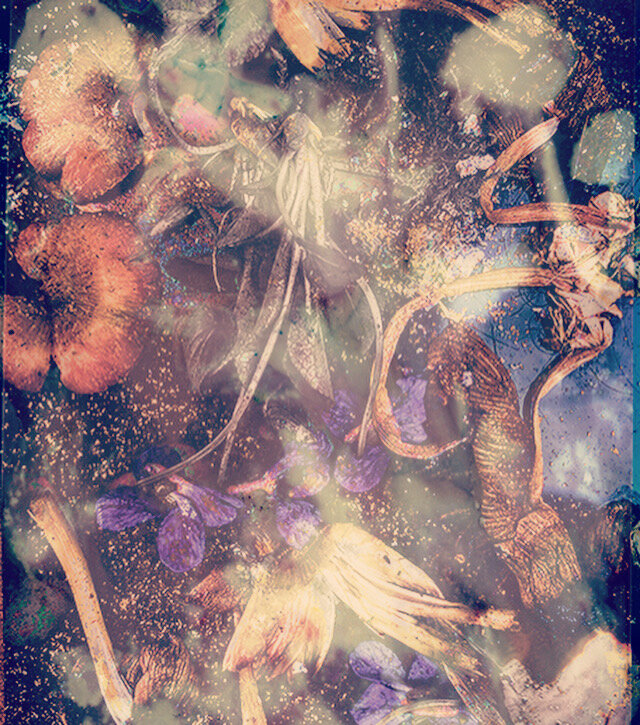During Lockdown I opened up my studio and began experimenting with photographic techniques requiring minimal resources, even doing without a camera. Confined to my garden I was able to try things out ideas without the pressure of commissions and deadlines. Spring 2020 was a period of fine weather with many sunny days and I therefore decided to try sunlight-based, nineteenth-century photographic techniques known as lumen prints and chemigrams.
I began making Lumen prints using garden plants and weeds. For these, I used out-of-date photographic paper quickly finding that different papers produced different colour results. I pressed these plants under glass onto these papers exposing them to the sun. Exposure time, not unexpectedly, depended on the strength of sunlight at a particular time. I also found that the condensation created by the humidity caused by damp foliage under glass was an uncontrollable factor producing both surprise but also equal degrees of success and failure. For example, I tried to incorporate images of bottles found buried near my house - a former WW2 site. This was quite a challenge since bottles are obviously not flat and it was difficult to incorporate them along a flat plane with plants. With lumen prints I discovered that normal chemical darkroom fixer is not just an environmental problem but also an aesthetic one, aggressively altering the original image. Urine fixer seemed a much gentler method but less stable.
I then experimented with Chemigrams on 5”x4” black and white Ortho negative film (which is sensitive to all visible light except red) and can be physically handled under a red darkroom light producing a range of black and white tones corresponding closely to the colours seen by the eye (but curiously from a colour-free source.) To enhance the chemical reaction, I sprayed flowers with anti-bacterial spray -- which I felt was very appropriate in Covid times. After exposure to the sun I scanned the negatives to further illuminate the image.
More recent images I termed hybrids because I integrated Ortho film negatives with digital images from my phone camera, bringing them into Photoshop and making a digital layered image. See Instagram @ginaglover.




















